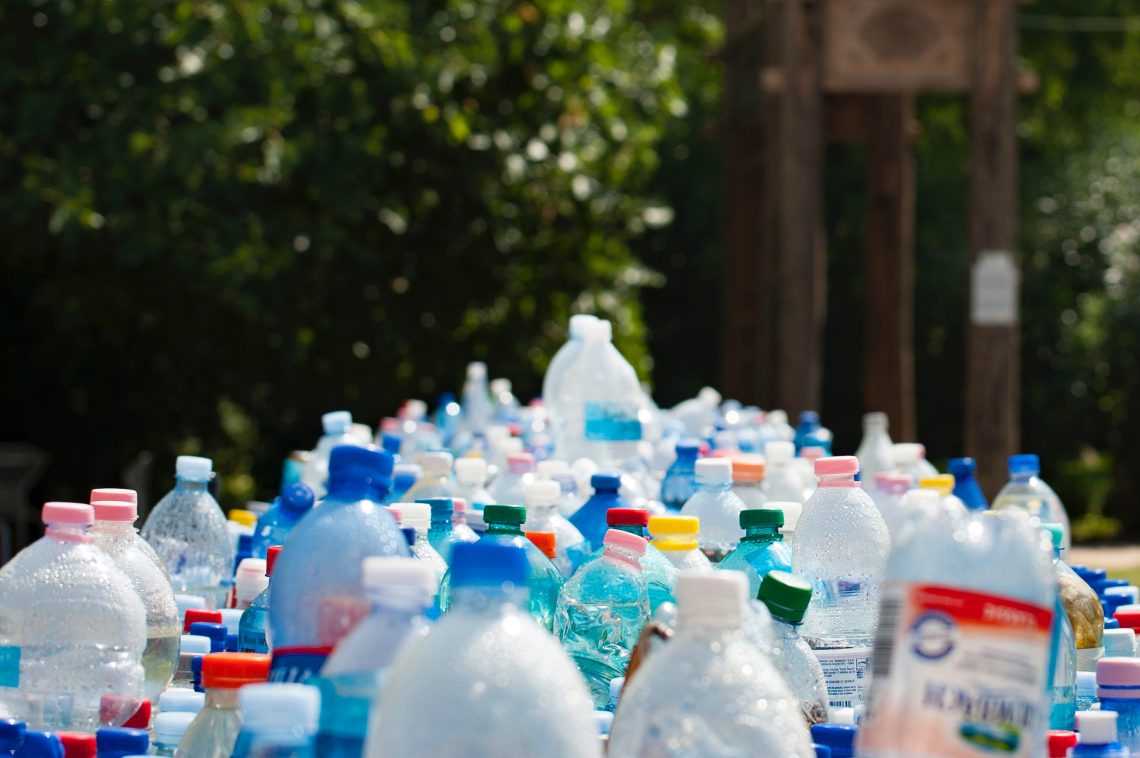The fact is, almost all, certainly most plastics, even those explicitly marked as “BPA Free,” leach chemicals that mimic or increase the effects of estrogen in our bodies.
Written by Michael Beshai
You might’ve heard about BPA in the news a few years back. It’s a chemical frequently used in production of polycarbonate plastics, which make up nearly all the disposable water bottles, food can linings, and food wrappers we use daily.
The ubiquitousness of BPA plastic with food may help to explain why one analysis of urine samples in the US found BPA in over 92% of those tested.1 There may be some cause for concern because BPA likely has estrogenic effects on humans.2,3
In response to the media attention, retail markets saw an influx of products, like tupperwares and plastic wraps, labelled “BPA Free”. Unfortunately, that didn’t solve the problem.
The fact is, almost all, certainly most plastics, even those explicitly marked as “BPA Free,” leach chemicals that mimic or increase the effects of estrogen in our bodies.4
In a study of 455 commercially available plastic products from the US, including from big-name stores like Walmart and Whole Foods, 71% of the products released a significant amount of estrogenic chemicals into a solution of either ethanol or saline, without stress or agitation of the plastics at all, beyond a wash with distilled water meant to sanitize them.4 All types of unstressed plastic products, including HDPE, PET, PP, food wrap, and baby bottles, all leached chemicals into one solution or the other.4
Every single one of the unstressed PET plastics tested positive for the estrogenic chemicals in one solution or the other, while 78% of the HDPE plastics, and 57% of the PP plastics did.4 PET, or as it’s less commonly known in long form, polyethylene terephthalate, is used in the production of plastic bottles and even in polyester fibres. So your plastic water bottle is likely leaching estrogenic chemicals into your water.5
Everyday stresses, like microwaving, adding boiling water, or exposure to sunlight (UV lighting), can change the chemical composition of plastic and lead to higher rates of leaching.
Plastics leach different amounts of chemicals based on what you put inside them the type of stress they undergo. Everyday stresses, like microwaving, adding boiling water, or exposure to sunlight (UV lighting), can change the chemical composition of plastic and lead to higher rates of leaching. 4,5,6
So, how does estrogen affect your body and how bad is the dose from plastic really?
First off, it’s important to bear in mind that chemicals with estrogenic effects, and other less common hormone disrupting chemicals, can come from different sources in the environment and have a cumulative effect.7
Second, many of the studies on chemicals that have estrogenic activity thus far have been conducted on animals. However, the endocrine systems of vertebrates are similar enough that the effects seen in those animals are likely reproducible in humans.8
“They’re turning the frickin’ frogs gay”
–Alex Jones
Radio host Alex Jones was ridiculed across the web for famously warning his audience that endocrine disrupting chemicals were reeking havoc on the environment such that animals were showing abnormal sexual behaviours. The fact is he was right. In mammals, chemicals with estrogenic effects have been found to produce a wide range of health issues, most notably, early puberty in females, reduced sperm count and sex drive for males, obesity, hypersexuality, as well as increased rates of certain “sex themed” cancers of the breast, ovaries, testicles, and prostate.4,9,10 Evidence of “underdevelopment of the brain, kidney and testis” has also been reported in mice.10 That’s consistent with the finding that exposure to pthalates is positively correlated with having a smaller penis and incompletely descended testicles in young boys.7 Of course these sex-related problems shouldn’t be too surprising considering estrogen is critical in the sexual development and differentiation of mammals, including humans of course.3
So what can you do?
You can start by minimizing your dietary exposure to plastic and help support HealthyResearcher.com at the same time by shopping for plastic free products using our Amazon Affiliate Link.
References
Check out the sources below for further reading on this subject!
1 Calafat, A. M., Ye, X., Wong, L.-Y., Reidy, J. A., & Needham, L. L. (2008). Exposure of the U.S. Population to Bisphenol A and 4-tertiary-Octylphenol: 2003–2004. Environmental Health Perspectives, 116(1), 39–44. http://doi.org/10.1289/ehp.10753
2 Cooper, J. E., Kendig, E. L., & Belcher, S. M. (2011). Assessment of Bisphenol A Released from Reusable Plastic, Aluminium and Stainless Steel Water Bottles. Chemosphere, 85(6), 943–947. http://doi.org/10.1016/j.chemosphere.2011.06.060
3 Della Seta, D., Minder, I., Belloni, V., Aloisi, A. M., Dessì-Fulgheri, F., & Farabollini, F. (2006). Pubertal exposure to estrogenic chemicals affects behavior in juvenile and adult male rats. Hormones and behavior, 50(2), 301-307.
4 Yang, C. Z., Yaniger, S. I., Jordan, V. C., Klein, D. J., & Bittner, G. D. (2011). Most Plastic Products Release Estrogenic Chemicals: A Potential Health Problem That Can Be Solved. Environmental Health Perspectives, 119(7), 989–996. http://doi.org/10.1289/ehp.1003220
5 Wagner, M., & Oehlmann, J. (2009). Endocrine disruptors in bottled mineral water: total estrogenic burden and migration from plastic bottles. Environmental Science and Pollution Research, 16(3), 278-286.
6 Begley, T. H., Dennison, J. L., & Hollifield, H. C. (1990). Migration into food of polyethylene terephthalate (PET) cyclic oligomers from PET microwave susceptor packaging. Food Additives & Contaminants, 7(6), 797-803.
7 Swan, S. H., Main, K. M., Liu, F., Stewart, S. L., Kruse, R. L., Calafat, A. M., … & Teague, J. L. (2005). Decrease in anogenital distance among male infants with prenatal phthalate exposure. Environmental health perspectives, 113(8), 1056.
8 Kavlock, R. J., Daston, G. P., DeRosa, C., Fenner-Crisp, P., Gray, L. E., Kaattari, S., … Tilson, H. A. (1996). Research needs for the risk assessment of health and environmental effects of endocrine disruptors: a report of the U.S. EPA-sponsored workshop. Environmental Health Perspectives, 104(Suppl 4), 715–740.
9 Gray, J. M., Rasanayagam, S., Engel, C., & Rizzo, J. (2017). State of the evidence 2017: an update on the connection between breast cancer and the environment. Environmental Health, 16(1), 94.
10 Kabuto, H., Amakawa, M., & Shishibori, T. (2004). Exposure to bisphenol A during embryonic/fetal life and infancy increases oxidative injury and causes underdevelopment of the brain and testis in mice. Life sciences, 74(24), 2931-2940.





